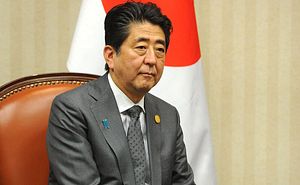On July 2, Tokyo went to the polls to decide the make-up of the Metropolitan Assembly. Although the election results themselves have no direct linkage to national politics per se, the winners and losers that emerged from the election are intriguing when considering the potential impact.
One of the loser was clearly the ruling Liberal Democratic Party (LDP). The LDP suffered an embarrassing defeat, having won only 23 out of 127 seats — its worst performance in recent history. Dubbed as a “historic” loss, the election results were largely interpreted as the manifestation of the voter’s dissatisfaction with the LDP, particularly the high-handedness shown by the Abe administration at times in responding to those who oppose his policy agenda.
The opposition Democratic Party’s loss in the July 2 election, however, was just as big as the LDP’s, if not bigger. Frustrated with the party’s declining public support, 16 out of 36 of the candidates that the DP endorsed left the party even before the election campaign began. As a result, the DP was able to win only five seats in the election. With the party leadership’s continuing failure to present a credible alternative to the voters in national politics, the DP’s viability as a potential alternative to the LDP seems to have disappeared.
Tokyo Governor Yuriko Koike has emerged as a clear winner. Candidates from her Tomin First no kai (Tokyo Citizens First Party) have won 49 seats. With the winners from other political parties that are supportive of Koike, she now controls an overwhelming majority of 79 seats in the Metropolitan Assembly. Although her new proposal for the Tsukiji fish market relocation plan has attracted a great deal of criticism, and her critics point out that voter support could evaporate quickly unless she can start producing tangible policy results, the big electoral victory places her in a stronger position to pursue her agenda as the Tokyo governor.
Another unlikely winner in the July 2 election is Komeito. Although Komeito forms the ruling coalition with the LDP in national politics, it parted ways with the LDP in the Tokyo Metropolitan Assembly election, siding with the Tokyo Citizens First Party. Komeito rallied around Tokyo Citizens First Party candidates in the districts where Komeito did not have the candidates of its own. Not only did all 23 candidates the party endorsed win, but Komeito’s behavior in the Metropolitan Assembly election also exposed the LDP’s vulnerabilities in an election when it does not have Komeito’s support. While Komeito’s siding with Koike’s party definitely stirred up a sense of displeasure inside the LDP, the election results likely enhance Komeito’s bargaining power vis-à-vis the LDP on national agenda items moving forward.
The July 2 election results will have consequences for Japanese politics in coming months. Even though the LDP still enjoys an overwhelming majority in both houses of the Japanese Diet, Abe will now have to tend more carefully to dissenting views both inside and outside the party. This can have a real impact on Abe’s ability to pursue divisive issues such as the constitutional revision. The big loss by the LDP will also likely create an opening for anti-Abe forces within the LDP to voice their discontent with Abe more openly. This could jeopardize the prospects for Abe’s reelection as the LDP party president in 2018.
The further decline of the DP also opens up the question of which political party can offer credible alternatives to the LDP moving forward. While the prospects for Koike’s Tokyo Citizens First Party to develop into a national party are anything but certain, the election results are yet another confirmation that a realignment among non-LDP forces will be required in order for any other party to have a chance of winning back governing power from the LDP. However, no realignment of non-LDP forces is in sight.
The July 2 Tokyo Metropolitan election marks the “beginning of the end” of Abe’s political dominance, which has lasted since 2012 in Japanese politics. The problem for Japan is that no one knows what it will be replaced with.

































